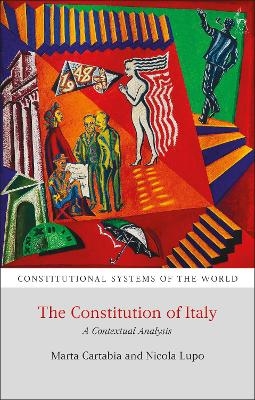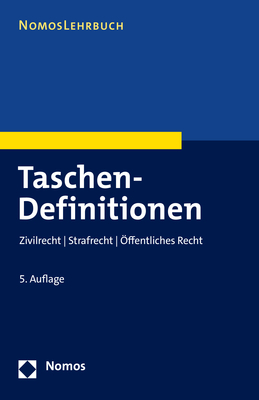
The Constitution of Italy
Hart Publishing (Verlag)
978-1-5099-0572-0 (ISBN)
Marta Cartabia is Professor in the Department of Law at Bocconi University of Milan, Italy, Nicola Lupo is Professor of Public Law at the LUISS Guido Carli University in Rome, Italy.
1. The Making of the Italian Constitution and its Evolution
I. Introduction
II. The Albertine Statute
III. The Fascist Regime, the Second World War and the Transition to the Republic (1922–1945)
IV. The Constituent Assembly (1946–1948)
V. The Rigidity of the Republican Constitution
VI. Procedures for and Limits on Constitutional Amendments
VII. The Most Important Constitutional Amendments
VIII. The Evolution of the Italian Republican Constitution
IX. Conclusion
Further Reading
2. The Italian Constitution within the ‘Composite’ European Constitution
I. Introduction
II. Openness to the International Order and its Foundations
III. The Constitutional Principles on International Law
IV. The ‘European Journey’ of the Constitutional Court
V. The ‘Counter-limits’ Doctrine
VI. The European Convention of Human Rights in the Italian Legal System
VII. Constitutional Rules and Practice of Implementing EU Law
VIII. Conclusion
Further Reading
3. Popular Sovereignty and Separation of Powers
I. Introduction
II. The Democratic Principle in the Italian Constitution: The Right to Vote and to be Elected
III. Direct Democracy: The Abrogative Referendum and its Different Usages
IV. Representative Democracy: The Electoral System and its Evolution
V. Conclusion
Further Reading
4. Parliament
I. Introduction
II. The Italian Parliament in the Constitution
III. A Symmetrical Bicameralism
IV. The Internal Organisation of the Chamber and the Senate
V. Privileges and Immunities of MPs
VI. Parliamentary Rules of Procedure
VII. The Legislative Process 2
VIII. The Budgetary Process
IX. The Oversight Function
X. Conclusion
Further Reading
5. The Government: Between Politics and Administration
I. Introduction
II. The Structure of the Government
III. The Confidence Relationship with the Two Houses of Parliament
IV. The Primary and Secondary Normative Powers of the Government
V. The Distinction between Politics and Administration
VI. The Constitutional Principles on Public Administration
VII. The Auxiliary Bodies and the Independent Authorities
VIII. Conclusion
Further Reading
6. The President of the Republic
I. Introduction
II. Election, Term of Office and Substitution
III. The Responsibility of the President of the Republic
IV. The Counter-signature and the Classification of the Acts of the President of the Republic
V. The Shaping of the Role of the President of the Republic Throughout the Constitutional Experience
VI. Conclusion
Further Reading
7. Regional and Local Government
I. Introduction
II. Origins and Evolution of the ‘Republic of Autonomies’
III. The Constitutional Framework and its Delayed Implementation
IV. Special and Ordinary Regions
V. The Direct Election of the Presidents of the Regions and Statutory Autonomy
VI. The Distribution of Legislative Competences between the State and Regions
VII. Administrative Autonomy and the Principles of Subsidiarity and Loyal Cooperation
VIII. Financial Autonomy
IX. Local Authorities
X. Conclusion
Further Reading
8. The Judiciary
I. Introduction
II. The Evolution of the Judicial Function
III. The Separation of Powers and Judicial Independence
IV. The Organisation of the Judiciary
V. Judicial Responsibility
VI. Conclusion
Further Reading
9. The Constitutional Court
I. Introduction
II. Historical Background
III. The European Model of Constitutional Adjudication
IV. The Constitutional Court: Composition and Functions
V. The Court’s Delayed Establishment and First Years of Activity: Reviewing Fascist Legislation
VI. A Variety of Remedies
VII. The Incidental Procedure and the Relationship with Ordinary Courts
VIII. The Constitutional Court and European Courts
IX. The Relational Character of Italian Constitutional Adjudication and Internal Collegiality
X. Conclusion
Further Reading
10. Protection of Rights
I. Introduction
II. The Evolution of Constitutionalism and the ‘Age of Rights’
III. Inviolable Rights
IV. The Italian Approach to Fundamental Rights: Personalism, Pluralism and Solidarity
V. Codified Rights and New Rights
VI. Limiting Rights
VII. Judicial and Non-judicial Safeguards
VIII. Key Rights
IX. Conclusion
Further Reading
| Erscheinungsdatum | 11.02.2022 |
|---|---|
| Reihe/Serie | Constitutional Systems of the World |
| Verlagsort | Oxford |
| Sprache | englisch |
| Maße | 138 x 216 mm |
| Gewicht | 481 g |
| Themenwelt | Recht / Steuern ► Allgemeines / Lexika |
| Recht / Steuern ► EU / Internationales Recht | |
| Recht / Steuern ► Öffentliches Recht | |
| ISBN-10 | 1-5099-0572-3 / 1509905723 |
| ISBN-13 | 978-1-5099-0572-0 / 9781509905720 |
| Zustand | Neuware |
| Haben Sie eine Frage zum Produkt? |
aus dem Bereich


